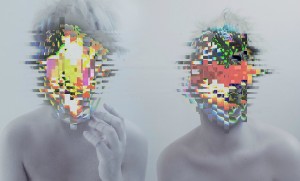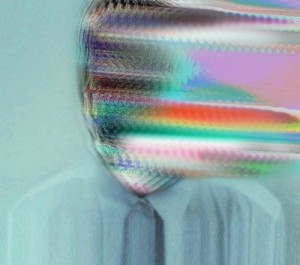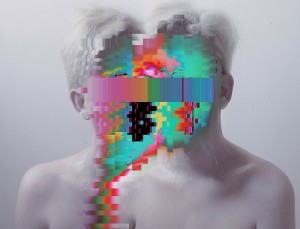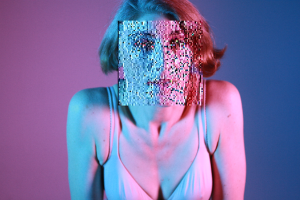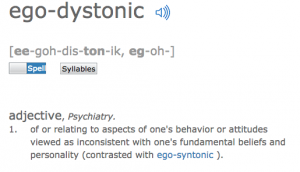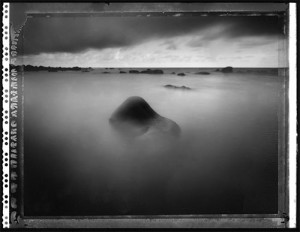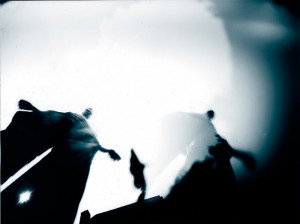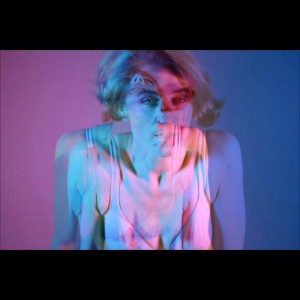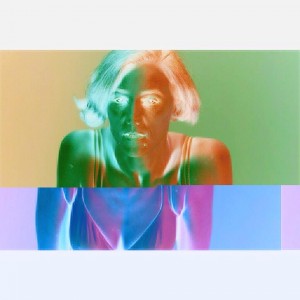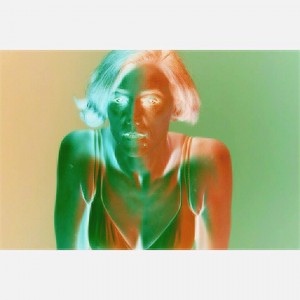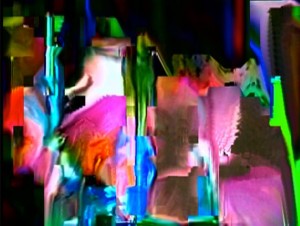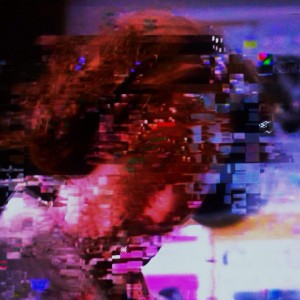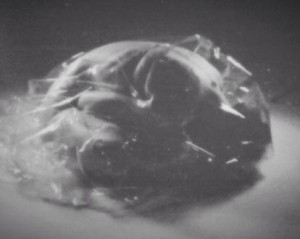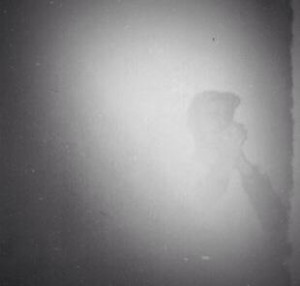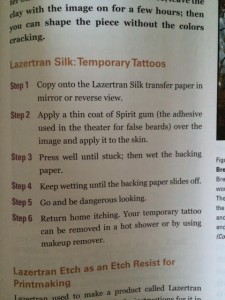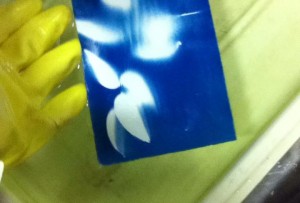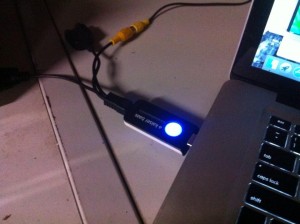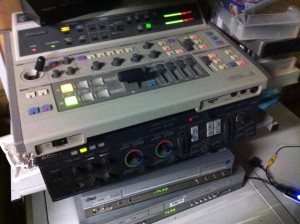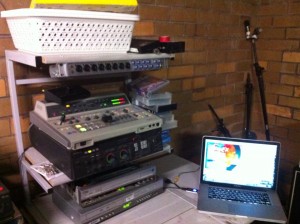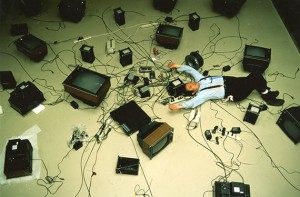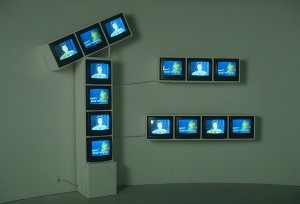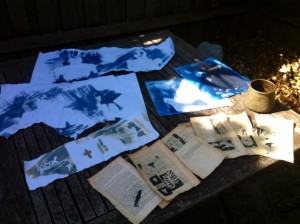
Alternative Photographic Processes
GLITCH PHOTOGRAPHY: HEITOR MAGNO
In this series of portraits and double exposure self-portraits, Heitor uses glitch art and pixelation to convey emotions unknown. By interfering with the image and identity, what’s left is a portrait image of what is oppressed, distorted and corrupted. Ultimately, his this is a reflection of the collective, anonymous and unstable internet cultural identity.
Designing Imperfection – Glitch Appeal?
Personally, I feel most glitched images have a sense of ‘schizophrenia’ about them. They try to be normal pictures but the glitch turns them into something completely different. Depending on where and what the glitch is this sense is more/less prominent. I get the same feeling from looking at glitch art as I do from a Jackson Pollack painting; madness and disarray with hints of control. 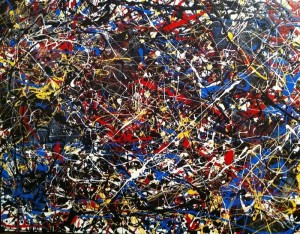
Glitch Lab: Iphone App
Glitch Lab is a photo ‘glitching’ app. It offers a full range of tools and options to destroy your photos. Here’s a series I entitled: FLAWLESS (selfie):
Glitch Experiment
I shot my friend Gray, using my Canon DSLR, lit my two LED lights with gels. I then glitched a cropped version of her face and pasted it onto the clean image. The result being a glitch ‘window’ view of her face. Trying to depict an altered version of oneself via digital/online technologies: Online Self vs IRL Self.
Glitch Video Projections: Signal
Projection mapping project from Russian creative agency Raduga Design uses glitch aesthetics and generative abstract visuals. The work was part of Moscow’s Circle of Light festival last year.
First Assignment: Brainstorm
Digital Dissonance//Surveillance//Electronic Identities
The evolution of the Digital Self is an important issue. As our electronic identities become more central to how we operate in society we need to consider how we keep them safe. We also need to consider the social impact of connectivity, or the lack thereof and its implications for the newly emerging global society.
Perfect Self (digitally curated) vs. IRL Self (humanly flawed)
Is our sense of self (acceptance, esteem, confidence) decaying through the digitisation of our personalities (and appearance)?
Matchbox Pinhole Camera
Pinhole Photography Inspo.
Pinhole – Why?
Pinhole photography is objective, however hugely vulnerable and experimental. I think the most satisfying aspect of pinhole photography is it’s physicality. In digital photography, unless their images are printed out, there is no molecular reality to the medium, no tangibility to the product. There is something so fulfilling about the tangibility of the pinhole process–constructing the camera, printing the negatives–it’s organic and wholesome.
GlitchLab: new discoveries
Masking/Blending:
Invert:
Assignment One: Concept
In my first photographic submission, I will be exploring the reductive–sometimes destructive–nature of identity constructs, especially constructing the self in the digital world. This series represents the self in a state of internalised and externalised perturbation–oppressed, concealed, distorted and corrupted.
GLITCH SUBMISSION: Assignment One:
Destroying archival video footage in MPEG Streamclip – screencap.
Process: open your file in MPEG Streamclip and transcode it to a very low bitrate mp4. Then transcode that to a few other formats, and eventually back to full quality.
MATCHBOX PINHOLE SUBMISSION: Assignment One:
D I G I T A L D E C A Y – I’d like to explore the phenomena of online persona and the effect this process has on human representation and connectedness.
Digital Cubism
Cyanotype Artists
Gary Emrich –
Christian Boltanski
Annette Messanger
Emma Howel
Robert Heineken
Image Transfer – IDEAS
key words/phrases:
digital cubism
distortion
FAKE IRL
emotional decay/physical decay
mask
digital armour
IMAGE TRANSFER GEL MEDIUM
Step 1: Materials


– brush
– dish or tray
– water
– scissors (in case trimming is necessary)
– an image to transfernotes on the gel:
the beauty of this technique lies in the nature of the acrylic – you can adjust and modify the gel to suit your needs… whether using retarder to increase smoothness, mixing in acrylic pigment, or even mixing in other materials (i’ve seen everything from gold flake to sand mixed into the acrylic gel). I use Liquitex’s Gloss Heavy Gel Medium, but any clear acrylic medium works.notes on the image:
Any image can be used for transfering, although some work significantly better than others. Uncoated magazines/newspapers work beautifully, but more coated photos/postcards/etc. may or may not transfer well – a color photo copy would be recommended to increase the probability of a successful transfer. Laser printed images work, but ink-jet prints generally don’t work as well.notes on the brush:
you can use any brush you’d line, whether bristle or foam. The different textures of the brushes will lay the gel medium down differently and will yield varied final products.
PERSONAL (ALT) IMAGE TRANSFER PROCESS:
The Cyanotype Process
The cyanotype process was one of the first non-silver technologies used to create photographic images. Originated in the 1840’s, it was not utilized in mainstream photography and was adopted as a copying technique, becoming known by the term “blueprint”, with its blue background reproductions of large architectural and mechanical drawings.
To begin the process, two solutions are prepared for the two-part sensitising process. Material sensitised with the solution is then printed by ultraviolet light.
Variations of the original formula involve different ratios of the following chemicals:
Potassium ferricyanide and Ferric ammonium citrate (green). Too much potassium ferricyanide in the solution will lower printing speed; too little may cause the blue colour to bleed into the lighter areas. Basically equal volumes of the two solutions are used.
Below are several more commonly used cyanotype recipes. The chemical names are linked to prices, information, and online ordering. Use appropriate safety measures throughout the process.
Solutions may be stored for several months in amber glass bottles.
My Tutorial Cyantype:
 |
|
(ALT) Cyanotype Process
ANALOGUE VIDEO MIXER: A vision mixer (also called video switcher, video mixer or production switcher) is a device used to select between several different video sources and in some cases compositing (mix) video sources together to create special effects. This is similar to what a mixing console does for audio.
The terms vision mixer and video mixer that describe both the equipment and the device operator are used outside the USA. In the United States, the equipment is called a video production switcher and the device operator is known as a technical director(TD) that is part of a television crew.
BROKEN GIFS: I think the broken gif aesthetic resonates with the concept around “digital dissonance”. Here are some examples:
http://2.media.collegehumor.cvcdn.com/42/39/7b3ddc23d5711b3fd23de56f85f8cdb6-gif-glitch-13.gif
http://0.media.collegehumor.cvcdn.com/51/69/9fc1f4a928590f14202566a5d7749b27-gif-glitch-14.gif
Concept revisited:
Digital Dissonance: The evolution of the Digital Self is an important issue. As our electronic identities become more central to how we operate in society we need to consider how we keep them safe. We also need to consider the social impact of connectivity, or the lack thereof and its implications for the newly emerging global society.
Perfect Self (digitally curated) vs. IRL Self (humanly flawed) Is our sense of self (acceptance, esteem, confidence) decaying through the digitisation of our personalities (and appearance)?
EXPLORE: the phenomena of online persona and the effect this process has on human representation and connectedness.
VIDEO MIXER + POST EDIT (results so far):
D I G I T A L D I S S O N A N C E (further exploration):
If you look for “Digital Dissonance” online, you’ll find lots of references. (Google claims 8,170 hits.) Although many relate to music (and art), none have anything to say about the psychological dissonance caused by the Digital Revolution.
Aside from music, my AHD gives this definition for dissonance: “Lack of agreement, consistency, or harmony; conflict.” If I had to pick one synonym, I’d go with disharmony. And you should know all about cognitive dissonance from Psych 101.
So what’s the deal with digital dissonance? If it’s such a popular phrase, why are there no definitions or examples? Don’t know, but let me offer one: it’s how digital makes us feel one way when reality is the opposite (hence the dissonance).
For example, digital gives us the feeling of anonymity, when in factour every digital action is documented, tracked, and recorded. These records are maintained and distributed without our knowledge.
Digital gives us the feeling of invisibility, when in fact every movement we make in a world filled with cameras and locators is documented, tracked, and recorded—on who knows how many databases.
Digital gives us the feeling of being in touch, when in fact many are using the technology to avoid actual interactions with others. As Sherry Turkle put it, digital “provides the illusion of companionship without the demands of a relationship.”
Digital gives us the feeling of being in control of this powerful technology, when in fact the technology really runs the show. But you wouldn’t buy the technology if it made you feel it was in charge. Well, it doesn’t, so we buy it—and then buy more.
The dissonance that digital makes us feel is no mere minor discomfort. The more businesses use digital to give us feelings contradictory to the facts, the more they manipulate how we live, where we go, what we buy, and especially, how we think.
Presenting Work:
Transferring video files onto VHS: https://www.youtube.com/watch?v=C_JkrXaAOYU
GLITCH VIDEO – FINAL ASSESMENT PROGRESS
Glitch vs Cyanotype???
Potentially changing my final project… I have ideas for Cyanotype and I’d really love to explore them/I’m overthinking my glitch work and I’m unsure it will suffice for this course. Hmm…
Further Cyanotype & Image Transfer *explorations*
FINAL: ARTIST STATEMENT
The glitch aesthetic is generally expressed in visuals that are fragmented, warped, discoloured, and often filled with noise, as a result of technological errors in equipment or digital image codes
Artist Clare Chapman, UK-born and based in Adelaide and Melbourne, combines the glitch aesthetic with images taken from popular culture to explore the seemingly infinite mutations of image destruction as deliberate forms of communication. Digital Dissonance explores the reductive–often destructive–nature of identity constructs, especially constructing the self in the digital world. This series represents the self in a state of internalised and externalised perturbation–oppressed, concealed, distorted and corrupted.
- GIF RESOURCES:
- GIFMaker.me
- GLITCH RESOURCES:
- Audacity – http://audacity.sourceforge.net/
- Text Edit Mac OS X
- Photoshop – http://www.adobe.com/au/products/photoshop
- Glitch Lab – http://armorgames.com/play/16042/glitch-lab
